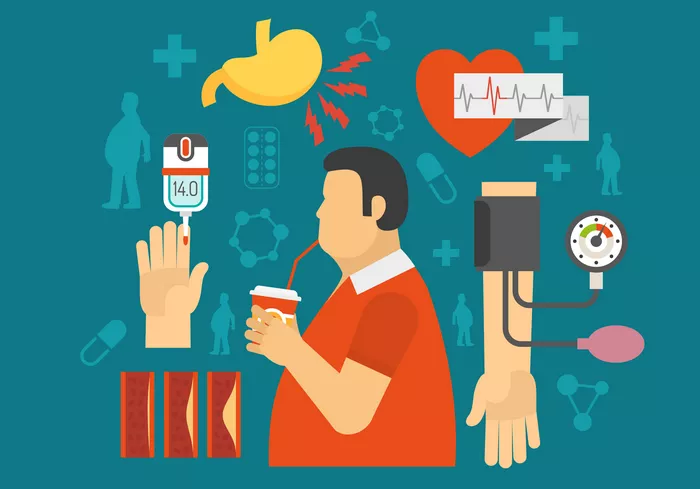The A1C test is one of the most reliable and widely used tools in managing diabetes and understanding long-term blood sugar control. For individuals living with diabetes, the A1C test helps determine how well blood sugar has been controlled over the past two to three months. It measures the percentage of hemoglobin molecules in the blood that have glucose attached to them, giving a clear picture of blood glucose levels over time. But what exactly is considered a “good” number for A1C, and how does it relate to overall health?
In this article, we will delve into the significance of A1C levels, define what is considered a good number for A1C, discuss factors that affect A1C targets, and explain how to manage A1C levels for optimal diabetes control and overall well-being.
What is A1C?
Definition of A1C
A1C, also called glycated hemoglobin, is a blood test that reflects a person’s average blood glucose levels over a two- to three-month period. The test measures the percentage of hemoglobin in the blood that has glucose attached to it. Hemoglobin is a protein found in red blood cells that carries oxygen throughout the body. As blood glucose levels rise, more glucose molecules attach to hemoglobin, resulting in higher A1C levels.
This test provides a snapshot of long-term blood sugar trends, unlike daily blood glucose tests that measure a person’s glucose levels at a specific point in time. A1C testing is used to assess the risk of diabetes, diagnose diabetes and prediabetes, and monitor the effectiveness of diabetes treatment plans over time.
Why is A1C Important for People with Diabetes?
For individuals with diabetes, keeping blood sugar levels within a healthy range is vital for preventing complications such as:
- Heart disease
- Kidney damage (diabetic nephropathy)
- Nerve damage (diabetic neuropathy)
- Eye problems (diabetic retinopathy)
- Increased risk of infections and slower healing
The A1C test plays a critical role in monitoring how well blood sugar is controlled. A higher A1C level suggests that blood glucose has been elevated over the past few months, which increases the risk of complications. Conversely, a lower A1C level typically indicates better blood sugar control and a lower risk of diabetes-related complications.
What is a Good Number for A1C?
Understanding the A1C Scale
A1C levels are expressed as a percentage, with the normal range for A1C being below 5.7%. However, when it comes to individuals with diabetes, the ideal A1C target can vary depending on individual health goals, medical conditions, and other factors. The American Diabetes Association (ADA) recommends the following guidelines:
Normal (Non-diabetic): An A1C level below 5.7% is considered normal, indicating that the individual does not have diabetes or prediabetes.
Prediabetes: An A1C level between 5.7% and 6.4% suggests prediabetes, a condition where blood glucose is higher than normal but not yet in the diabetic range.
Diabetes: An A1C of 6.5% or higher is indicative of diabetes. However, individuals with diabetes should aim to achieve an A1C level as close to normal as possible, while avoiding the risks of hypoglycemia (low blood sugar).
For people with diabetes, a good A1C target is typically below 7%. This range is associated with a lower risk of complications such as heart disease, kidney disease, and nerve damage, while still being achievable for most people. However, individual targets may differ based on several factors.
Individual A1C Targets: Factors to Consider
While an A1C target of 7% is often recommended, healthcare providers may adjust this target based on a person’s age, duration of diabetes, presence of other health conditions, and the risk of hypoglycemia. It is essential to consider the following factors when determining a good number for A1C:
1. Age and Life Expectancy
For older adults, especially those with a shorter life expectancy or multiple chronic health conditions, healthcare providers may recommend a less stringent A1C target (e.g., less than 8%). This is to reduce the risk of hypoglycemia, which can be dangerous in older adults and people with other health concerns.
2. Duration of Diabetes
For individuals who have been living with diabetes for many years, their body may become less sensitive to insulin over time, which can make it more difficult to maintain an A1C level below 7%. In these cases, healthcare providers may set a more individualized A1C target based on the person’s overall health and ability to manage blood sugar.
3. Risk of Hypoglycemia
For individuals who are prone to hypoglycemia (low blood sugar), aiming for an A1C level that is too low can pose a significant risk. Hypoglycemia is a serious condition that can cause dizziness, confusion, fainting, or even seizures. People at risk of hypoglycemia should work with their healthcare provider to set an A1C target that balances optimal blood sugar control with the risk of low blood sugar.
4. Other Health Conditions
Individuals with multiple health conditions, such as heart disease, kidney disease, or severe retinopathy, may have different A1C targets based on the severity of their other conditions. For example, someone with advanced kidney disease may have a higher A1C target, while someone with cardiovascular disease may be more focused on achieving a lower A1C to reduce the risk of heart-related complications.
5. Pregnancy
During pregnancy, especially in individuals with gestational diabetes or pre-existing diabetes, the A1C target may be different. A lower A1C goal of 6% or below may be recommended to ensure optimal health for both the mother and the baby. However, it is essential to avoid the risk of hypoglycemia, especially in the later stages of pregnancy.
What is the Ideal A1C for People with Type 2 Diabetes?
For individuals with type 2 diabetes, maintaining an A1C level of 7% or lower is generally recommended. This level has been shown to reduce the risk of diabetes-related complications, such as:
- Eye damage (diabetic retinopathy)
- Nerve damage (diabetic neuropathy)
- Kidney disease (diabetic nephropathy)
- Heart disease and stroke
- Amputations
In some cases, healthcare providers may recommend a more lenient target of 7.5% to 8% if the person has other factors such as advanced age, other chronic conditions, or difficulty managing blood sugar levels. The goal is to find a balance that minimizes the risk of complications without causing low blood sugar episodes or excessive treatment burdens.
What is the Ideal A1C for People with Type 1 Diabetes?
For individuals with type 1 diabetes, a more aggressive approach to blood glucose control may be appropriate, as long as the risk of hypoglycemia is carefully managed. For most people with type 1 diabetes, an A1C target of below 7% is recommended. However, some people may find it difficult to achieve this goal without significant fluctuations in blood sugar levels or hypoglycemia. Therefore, the ideal target for type 1 diabetes may vary based on the person’s ability to manage their blood sugar levels.
How to Achieve a Good A1C Number
Achieving and maintaining an A1C level within the recommended range requires a combination of healthy lifestyle choices, consistent blood glucose monitoring, and, if necessary, medication. The following strategies can help improve A1C levels:
1. Healthy Diet
A balanced diet is key to managing blood sugar levels. Focus on:
Complex carbohydrates: Whole grains, legumes, and starchy vegetables
Lean proteins: Fish, poultry, tofu, and legumes
Healthy fats: Avocados, nuts, seeds, olive oil
Non-starchy vegetables: Leafy greens, broccoli, cauliflower, peppers
Fruits: Limit high-sugar fruits and focus on berries and apples
Avoid sugary drinks, processed snacks, and foods high in refined carbohydrates. Portion control is also essential to prevent blood sugar spikes.
2. Regular Physical Activity
Exercise helps regulate blood sugar by improving insulin sensitivity and allowing muscles to use glucose more efficiently. Aim for at least 150 minutes of moderate aerobic activity (e.g., walking, swimming, cycling) per week, combined with strength training exercises two or more times per week.
3. Medication Adherence
For individuals with type 2 diabetes, medications such as metformin, SGLT2 inhibitors, or insulin may be necessary to help control blood sugar levels. It is important to follow the prescribed medication regimen and communicate regularly with a healthcare provider to assess its effectiveness and make adjustments as needed.
4. Consistent Blood Glucose Monitoring
Regular blood glucose monitoring allows individuals to track fluctuations in blood sugar and adjust their treatment plans accordingly. Keeping a log of blood sugar readings can help identify patterns and potential areas for improvement.
5. Stress Management
Chronic stress can raise blood sugar levels due to the release of cortisol. Practicing relaxation techniques such as deep breathing, yoga, meditation, or mindfulness can help reduce stress and support blood sugar control.
6. Sleep Hygiene
Lack of sleep or poor sleep quality can affect insulin sensitivity and blood sugar levels. Aim for 7-9 hours of sleep per night and maintain a consistent sleep schedule.
Conclusion
The ideal A1C level for individuals with diabetes is typically below 7%, but this target may vary depending on age, duration of diabetes, the presence of other health conditions, and the risk of hypoglycemia. Regular A1C testing, in combination with healthy lifestyle habits, consistent blood glucose monitoring, and appropriate medication, is essential for achieving optimal blood sugar control and preventing long-term complications.
Consult with a healthcare provider to set personalized A1C goals that align with your health needs and lifestyle. Strive for a balanced approach to diabetes management that prioritizes both short-term blood sugar control and long-term health outcomes.
Related topics:
What Should Blood Sugar Be After 1 Hour?



























